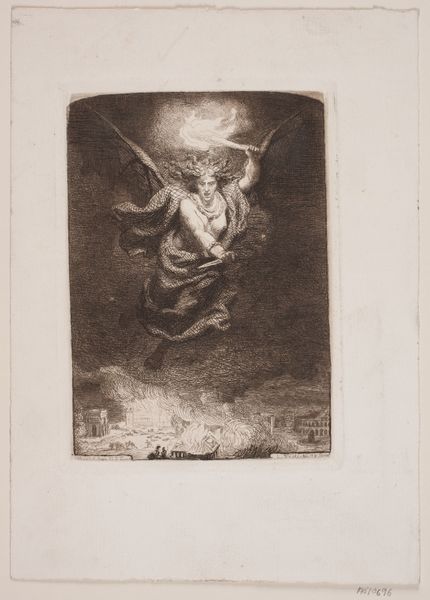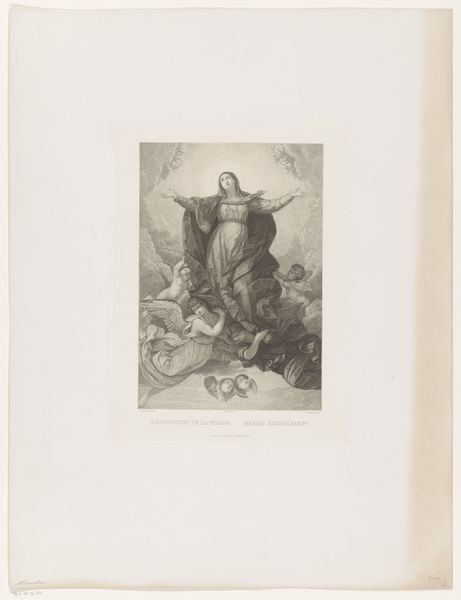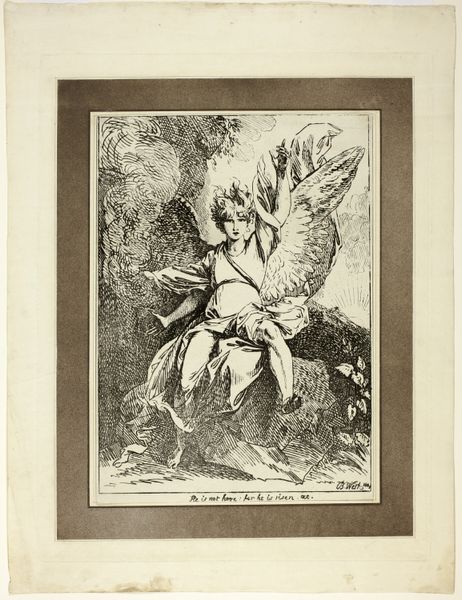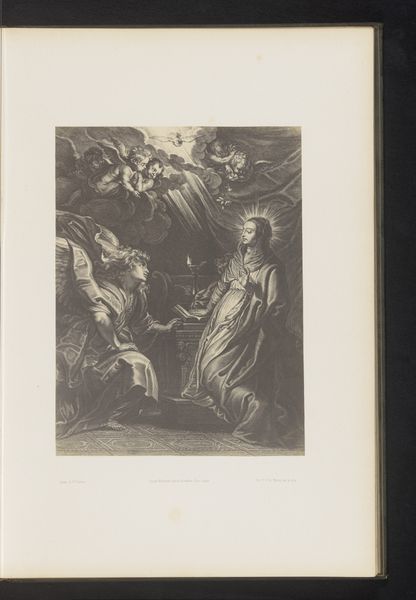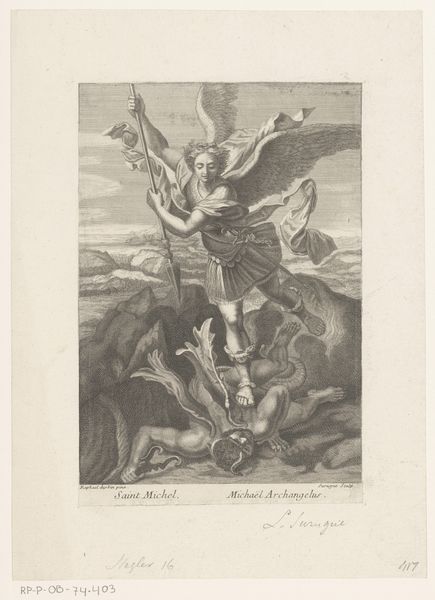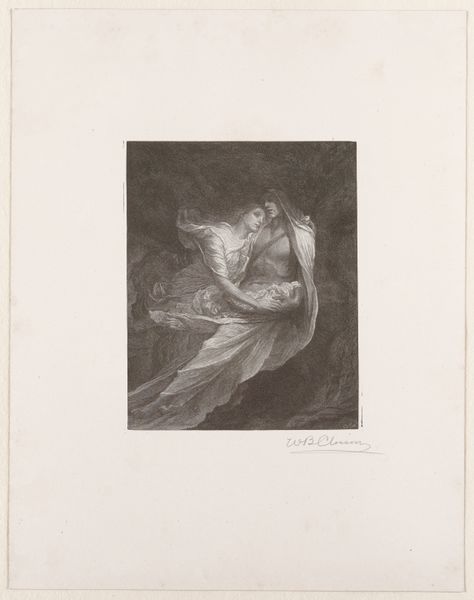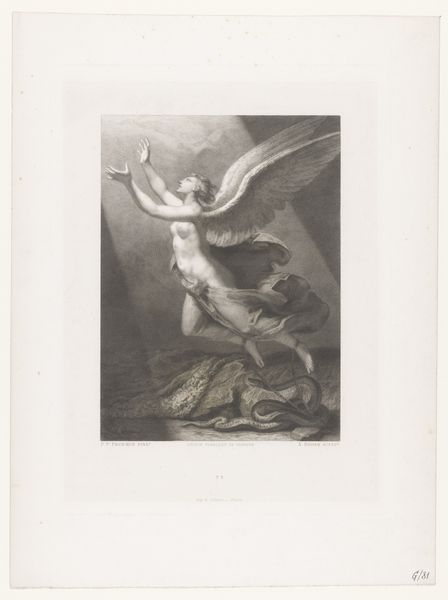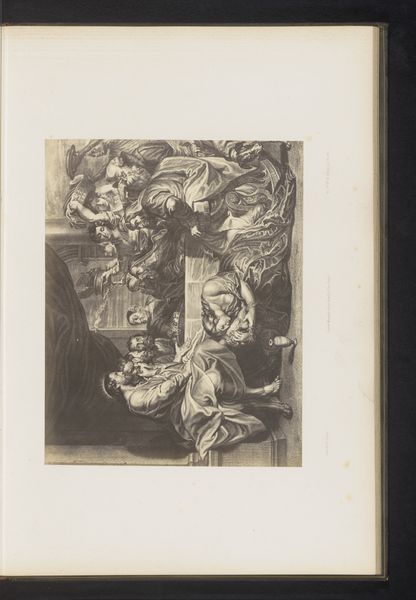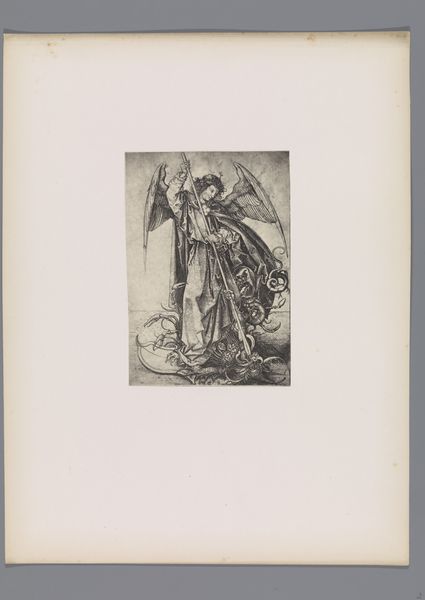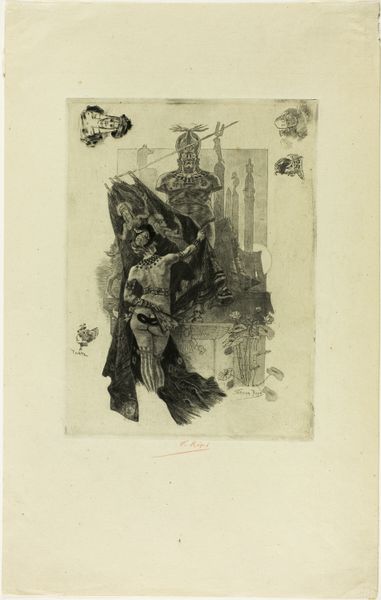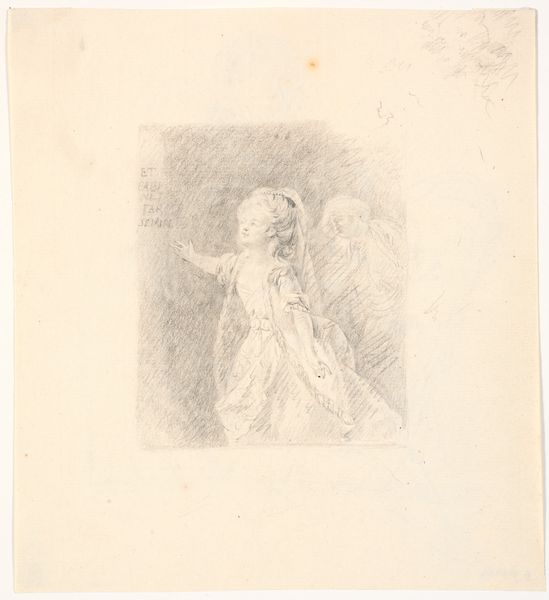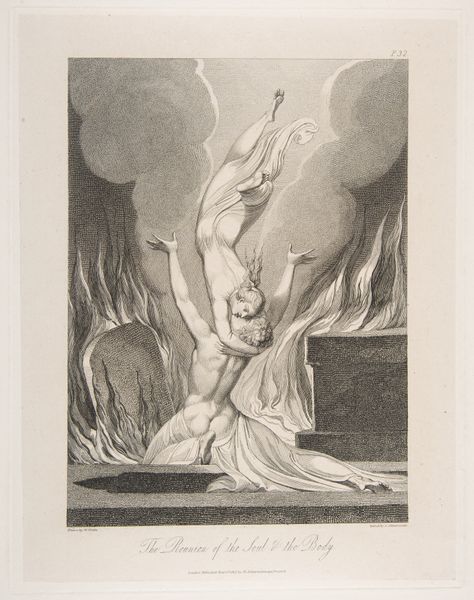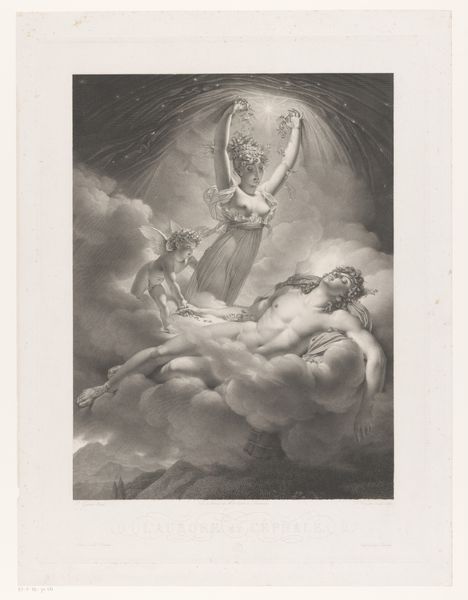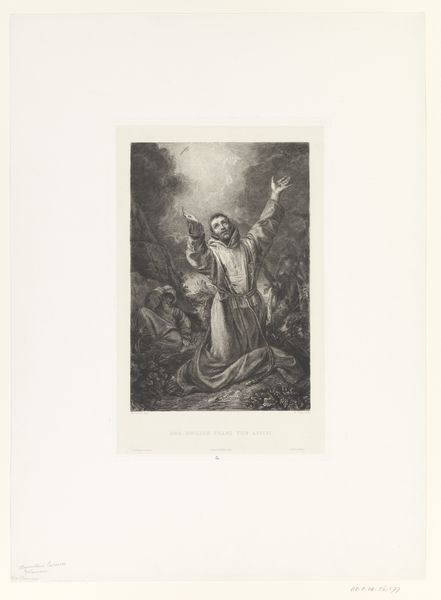
Dimensions: 145 mm (height) x 105 None (width) (plademaal), 243 mm (height) x 160 mm (width) (bladmaal)
Curator: Here we have "Revolutionen," an engraving from 1873 by the Danish artist Lorenz Frølich, housed here at the SMK. It's a print, using watercolor and ink to build drama. What are your initial thoughts? Editor: A figure of furious power, suspended over a city in flames... talk about making an entrance! There's such intensity in her gaze, and I immediately thought, wow, whoever she is, you do NOT want to cross her. Curator: The figure does indeed command attention. Observe the wings, the torch held aloft, the sword in the other hand. These are symbols laden with meaning, recalling classical depictions of fury and righteous indignation, with a specific, culturally embedded rage at social change. The fire, of course, suggests not only destruction, but purification. Revolution can often seem a baptism by fire. Editor: Purification... or just good old chaos? I mean, the scene down there is utter turmoil. There's almost something gleeful in her expression, which gives me pause. Revolutionaries aren’t always angels. Curator: Precisely! And I think that's what makes Frølich's work so compelling. It resists easy categorization. Consider also that Romanticism valued strong emotional responses, making the intense subject appropriate for this work. It is important, though, to note the history painting theme, with Frølich often using Norse mythology, classical history and symbol as framework for many such powerful emotional pieces. Editor: Absolutely. It makes you wonder, though, about Frølich’s own stance. Does he celebrate this figure, or is he offering a darker commentary? The line work itself seems chaotic. Maybe, rather than offering an endorsement or a warning, he’s conveying something about the sheer, unstoppable force of change. Curator: Yes, the very *idea* of revolution holds inherent contradictions. By embodying these tensions visually, Frølich forces us to confront our own assumptions and feelings about social upheaval and whether, to him, any "change" should actually be called progress. Editor: And he does it so viscerally! Even reduced to the graphic starkness of a print, the piece retains a raw, almost unsettling power. Makes you want to go home and read a good history book... or maybe just hide under the covers. Curator: Indeed, art as a trigger for introspection... that's a good day's work for both the artist and for us.
Comments
No comments
Be the first to comment and join the conversation on the ultimate creative platform.
